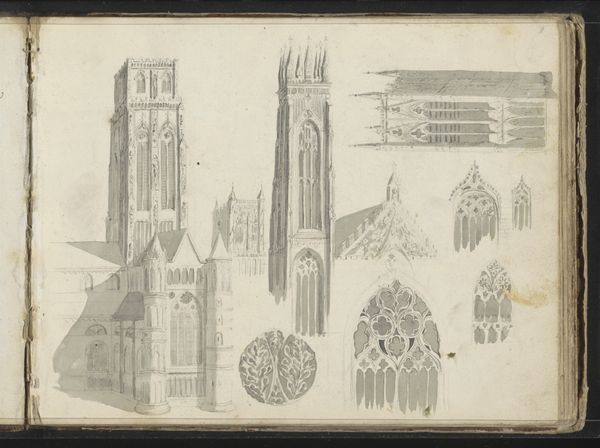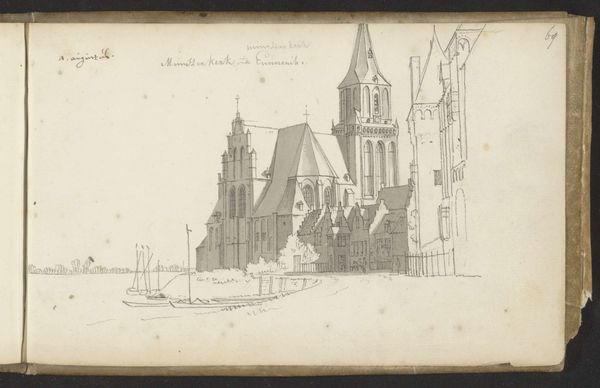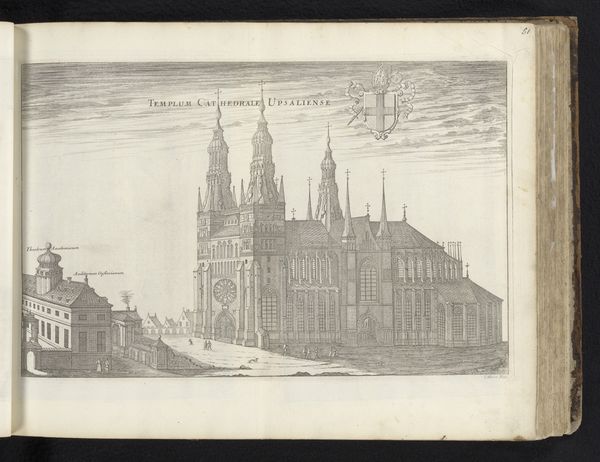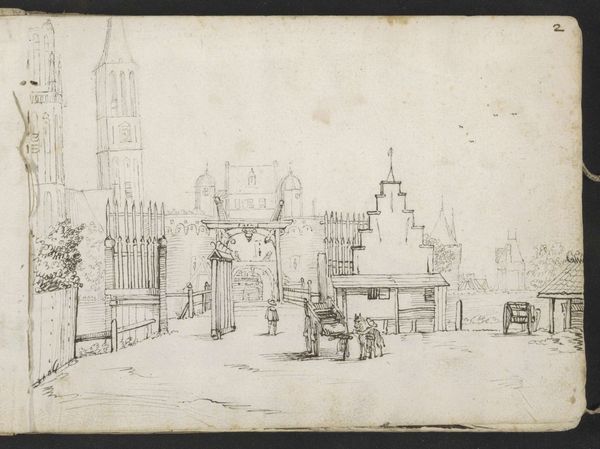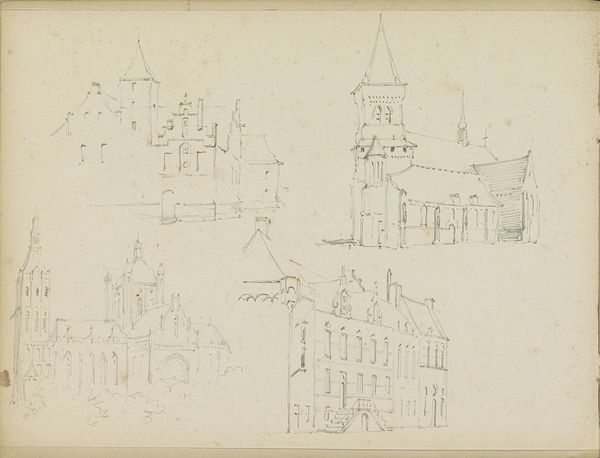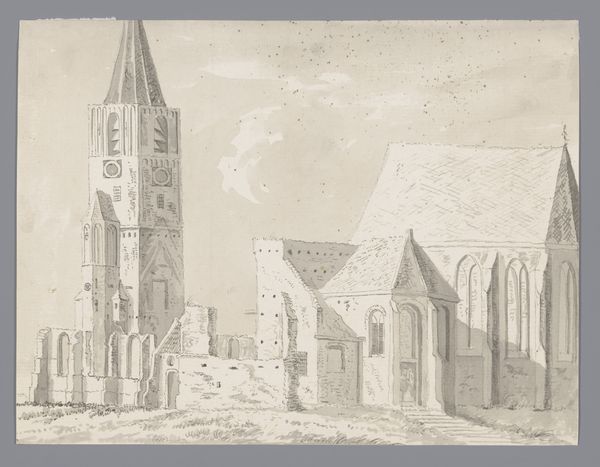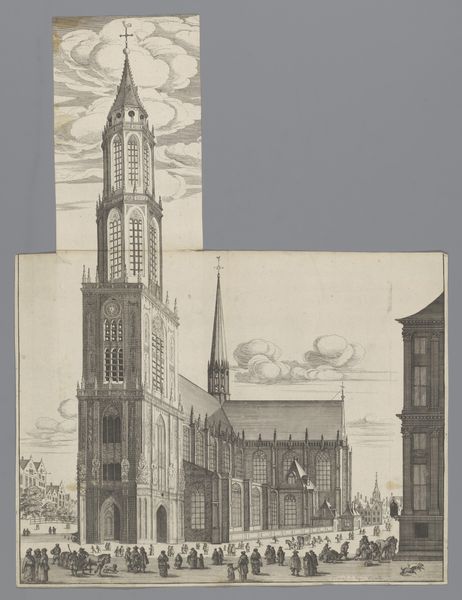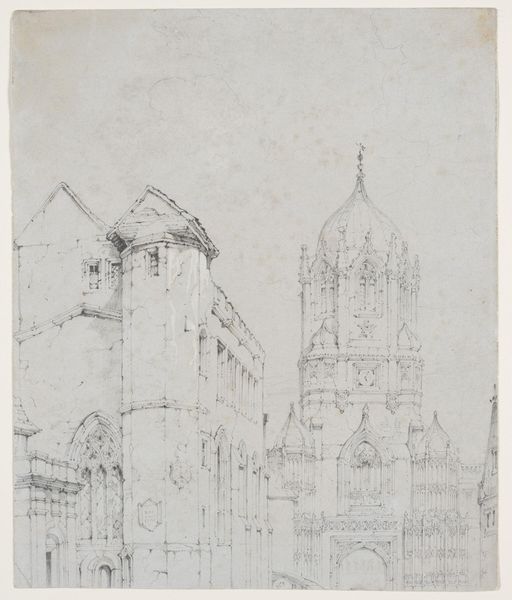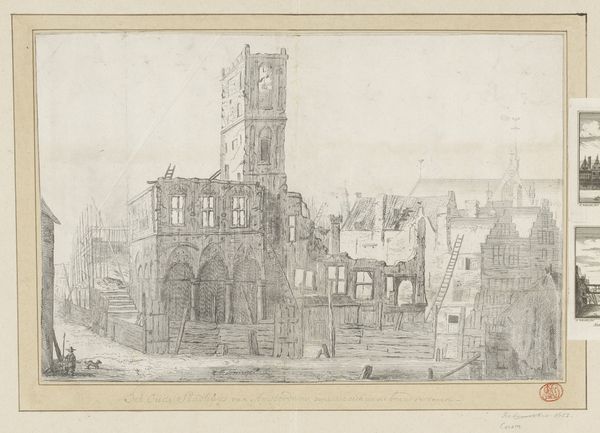
drawing, paper, watercolor, ink, pencil
#
drawing
#
aged paper
#
toned paper
#
sketch book
#
landscape
#
paper
#
personal sketchbook
#
watercolor
#
ink
#
coloured pencil
#
geometric
#
pencil
#
sketchbook drawing
#
cityscape
#
watercolour illustration
#
sketchbook art
#
marker colouring
#
watercolor
#
realism
Copyright: Rijks Museum: Open Domain
Curator: This sketchbook page, attributed to Willem (II) Troost, captures studies of church exteriors and towers. The dates associated are 1822-1893. It resides here at the Rijksmuseum. My initial impression is of almost architectural blueprints but rendered with artistic softness. Editor: Yes, there's something delicate about it. I'm drawn to the use of light and shadow. It feels both meticulous and fleeting, capturing specific architectural details with a sense of transience. These structures represent a complex intersection of faith, power, and community; the rapid sketches hint at social commentaries by depicting how the society in question invested in monumental icons of public devotion and identity. Curator: Absolutely, and if we consider Troost’s tools - pencil, ink and watercolor on paper, it reveals a layered process, I appreciate how the material reality – the types of paper and the pencils he might have employed- shapes how these sketches feel historical, capturing that early nineteenth-century aesthetic so well. I wonder what kind of paper this is, and who the manufacturer might have been… it feels woven with the economic fabric of that period. Editor: Thinking about these structures in a gendered way is interesting as well. For centuries these churches represented the center of spiritual, but also very political, patriarchal authority that disempowered women by design. Troost’s sketching these, whether consciously or not, becomes an act of engaging with power structures through a specific artistic lens that also reproduces gender dynamics. The gaze involved in even simply looking at a landscape implicates identity, privilege, and systems of hierarchy that subtly affect the overall message conveyed. Curator: The sketches, viewed from the vantage of our present era, also suggest an elegy, don’t they? Not just for buildings now gone, but perhaps also a cultural way of seeing slowly displaced in the rising tide of modernity and the shift in values within western Europe? Editor: Perhaps. It might serve us well to see what was happening socially in that area during that particular moment; maybe comparing notes on how religious and political structures affected the life of artists. Curator: Exactly, delving deeper into that context helps enrich our experience. It gives me another appreciation layer to reflect on the artistic decisions surrounding production, which adds historical understanding as we leave the drawing here on display at the museum today. Editor: Agreed. Considering the socio-political implications adds more than meets the eye!
Comments
No comments
Be the first to comment and join the conversation on the ultimate creative platform.
